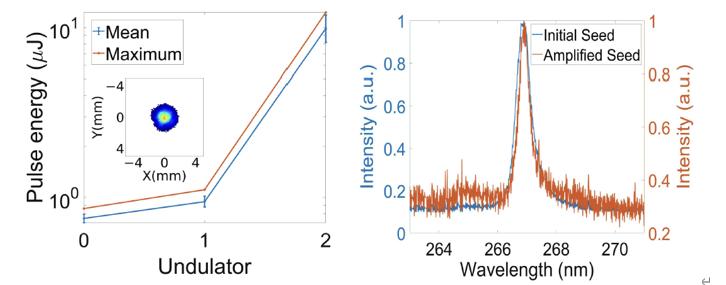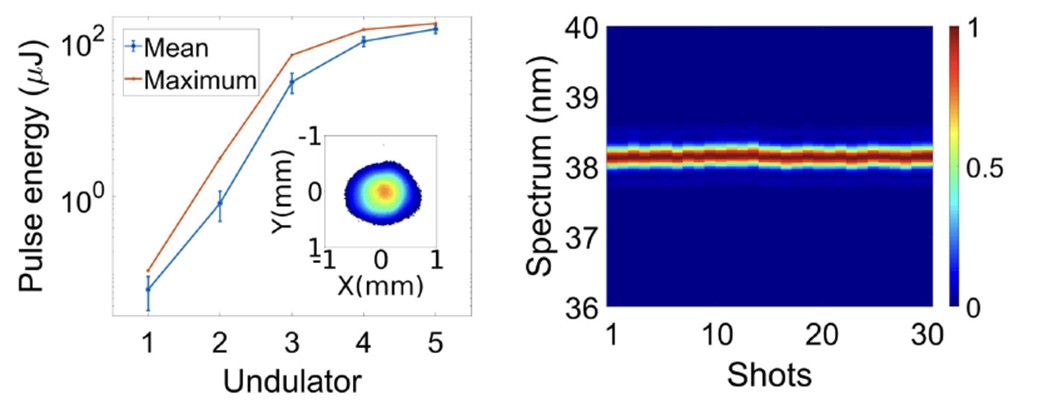Research Progress
Recently, the Free-Electron Laser (FEL) team at the Shanghai Advanced Research Institute (SARI), Chinese Academy of Sciences experimentally demonstrated their independently proposed concept of Direct-Amplification Enabled Harmonic Generation Free-Electron Laser (DEHG-FEL) for the first time, and successfully achieved its lasing and stable operation.
This marks a key milestone toward realizing X-ray FEL sources operating at megahertz (MHz) repetition rates. The results were published in Physical Review Letters and were highlighted as an Editors’ Suggestion.
Soft X-ray FELs with high repetition rates hold great promise in cutting-edge research areas such as time-resolved spectroscopy, coherent diffraction imaging, and ultrafast dynamics studies of nanostructures and nanodevices. However, traditional externally seeded FEL schemes typically require ultraviolet seed lasers with peak powers up to ~100 megawatts, limiting their repetition rates to the kilohertz (kHz) range.

Figure1 Amplification of seed laser via high-gain FEL process while maintaining its coherence (Image by SARI)
SARI’s FEL team has long been dedicated to the development of high-repetition-rate, fully coherent FELs. In previous work, they demonstrated a self-amplification mechanism of coherent energy modulation at the Shanghai Soft X-ray FEL facility (SXFEL) (Phys. Rev. Lett. 126, 084801, 2021).
In the present study, by employing a long modulator section, the team directly amplified a weak seed laser through a high-gain FEL process, achieving a powerful and stable modulation laser (Figure 1).
During this process, the electron beam acquired sufficient energy modulation. After passing through a dispersive section, coherent microbunching on the scale of optical wavelengths was formed, leading to the generation of fully coherent radiation up to the 12th harmonic.
By further amplifying the 7th harmonic to saturation, the team achieved a pulse energy of approximately 160 µJ with an energy stability of 5.5%. Through harmonic cascading, the team successfully generated 16th harmonic output with a spectral bandwidth approaching the Fourier transform limit, indicating excellent longitudinal coherence of the DEHG-FEL (Figure 2).

Figure 2 Stable, fully coherent short-wavelength FEL output achieved via harmonic conversion (Image by SARI)
DEHG technology enables effective amplification of extremely weak seed laser signals with a simplified system configuration. In principle, it can reduce the required seed laser power by two to three orders of magnitude while delivering stable, controllable, high-harmonic output—making it particularly suitable for high-repetition-rate externally seeded FELs.
Moreover, it has the potential to provide solutions for achieving high repetition rates in more advanced two-stage seeding schemes, such as echo-enabled harmonic generation (EEHG). In the future, DEHG could also be integrated with high-order harmonic generation (HHG) technologies to offer new tools for ultrafast spectroscopy, imaging, and materials research in the soft X-ray region.





